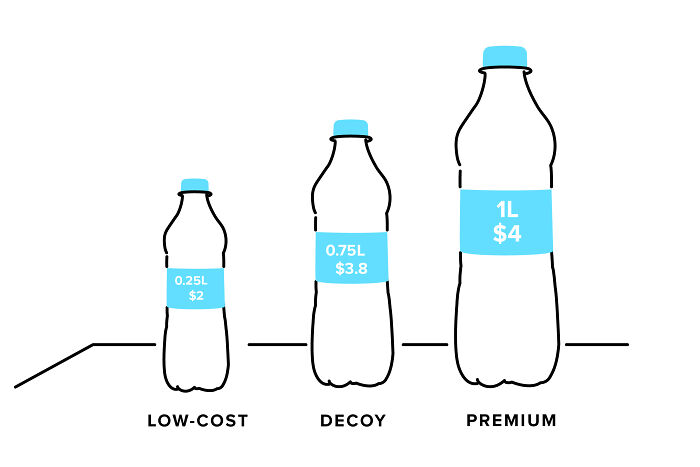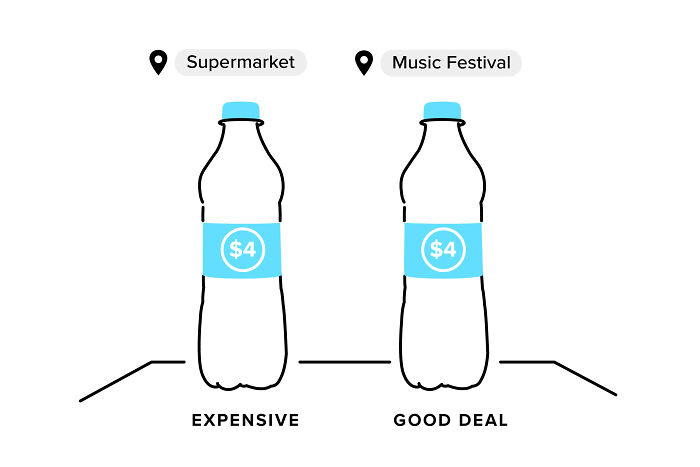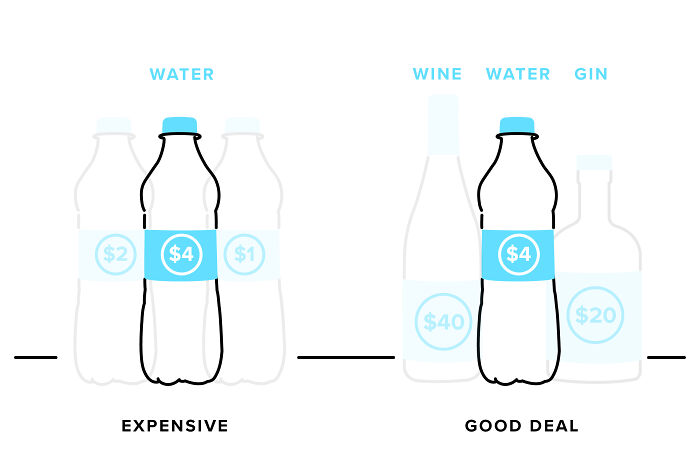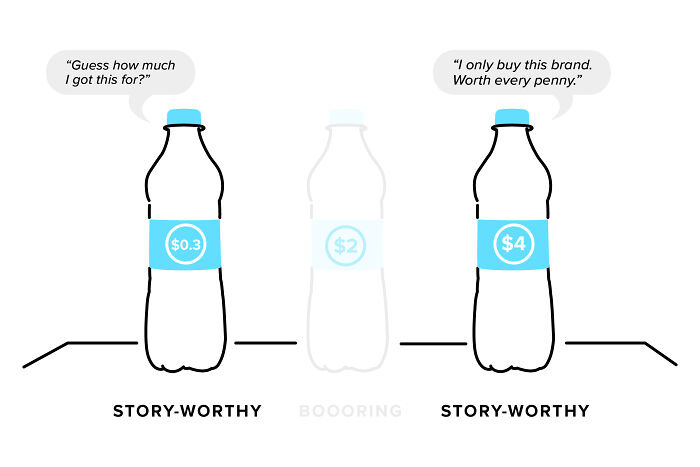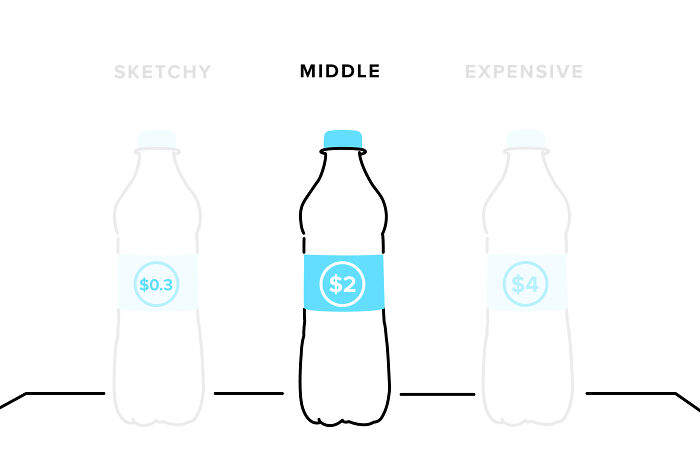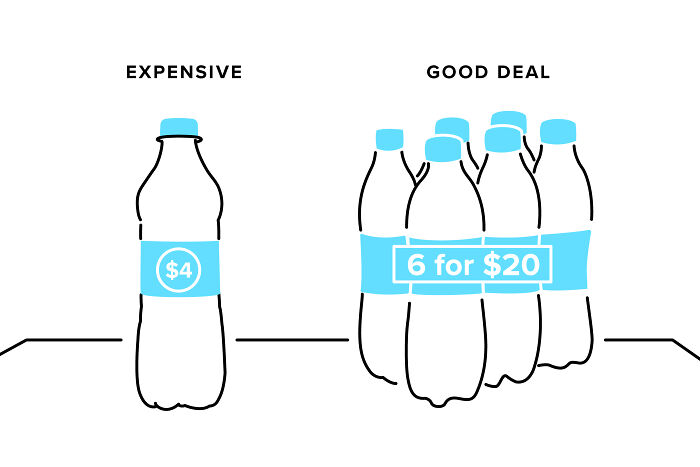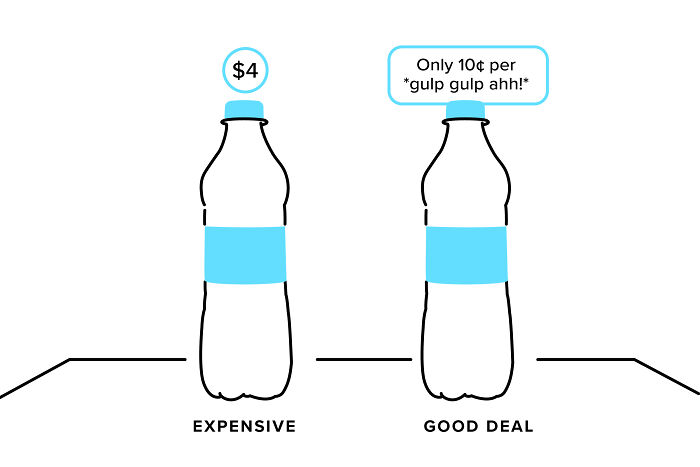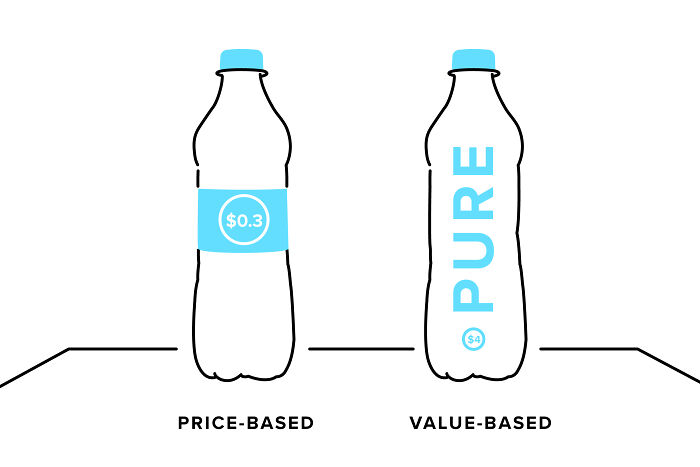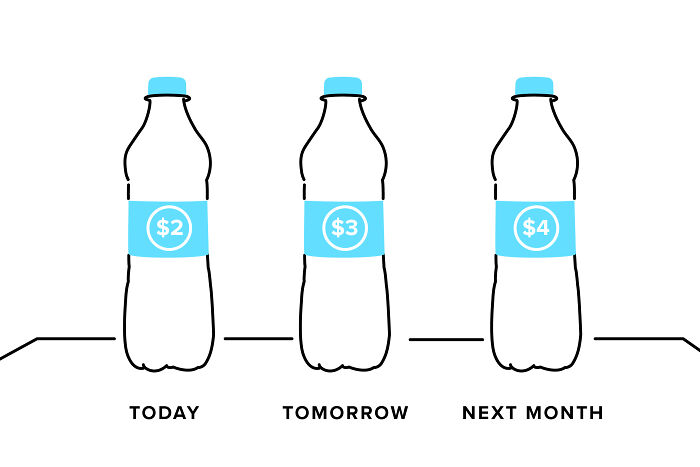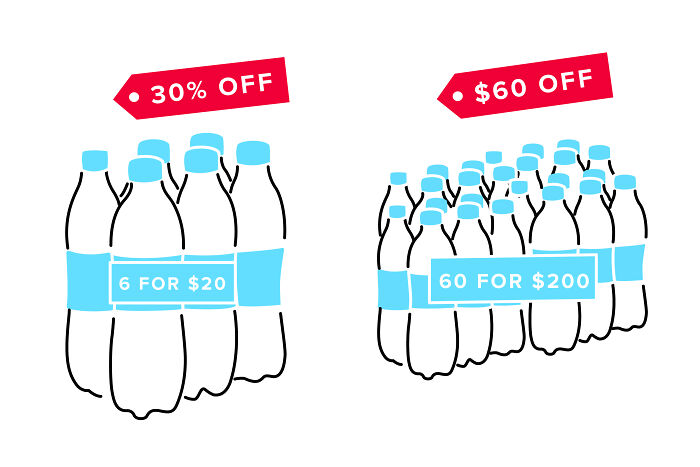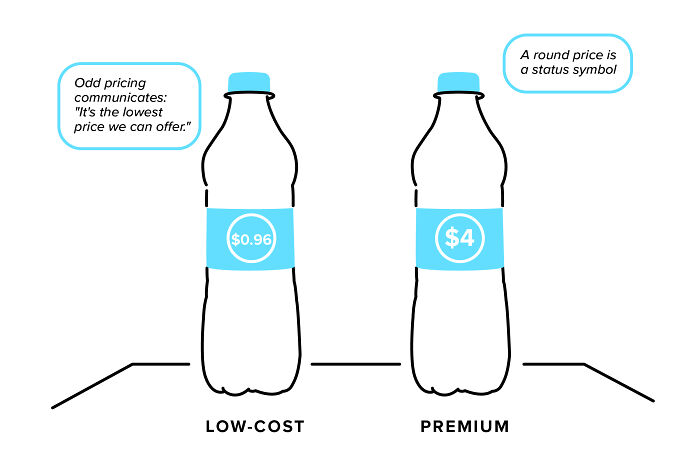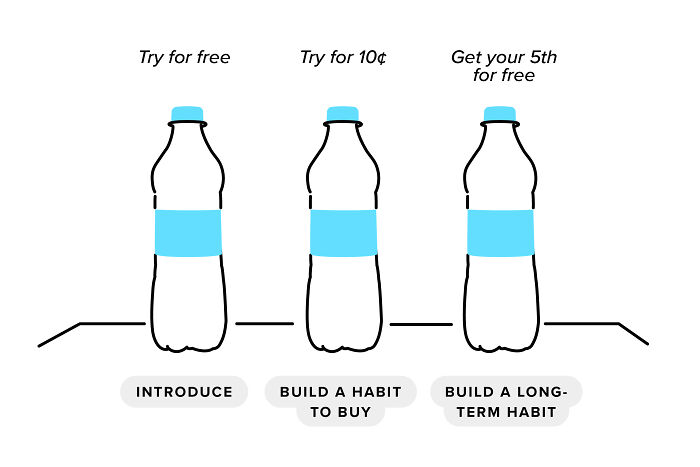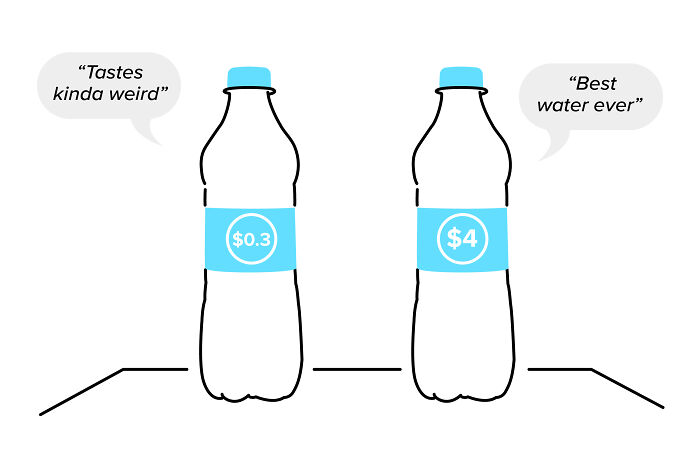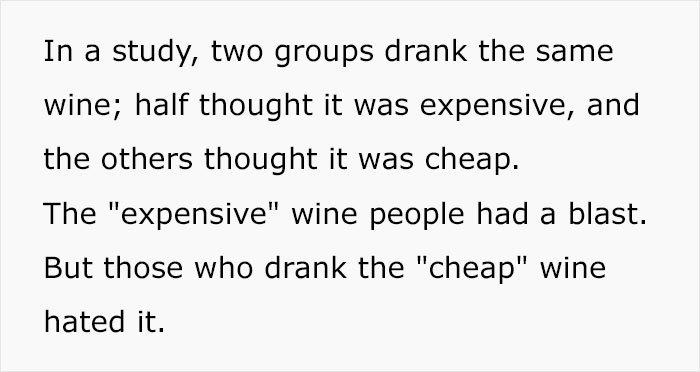Businesses put a lot of effort into figuring out the right prices for their products. Set it too low, and you leave money on the table. Make it too high, and you can say goodbye to sales that could have made your year.
Finding the ideal number means choosing a strategy that’s appropriate for that particular situation. And Imgur user ShlomoGenchin thought it would be interesting to explore some of the most common options.
Listen beautiful relax classics on our Youtube channel.
But what’s really awesome, after they did all the homework, ShlomoGenchin decided to summarize everything in simple visualizations and post the images online where everyone could see them.
1. Decoy Pricing. The premium costs only a bit more than the decoy but provides much more value
Image credits: ShlomoGenchin
2. Location Pricing
Image credits: ShlomoGenchin
3. Relative Pricing. Good positioning makes customers compare your product with more expensive products
Image credits: ShlomoGenchin
4. Social Pricing. People tend to only speak about very expensive or very cheap stuff they bought
Image credits: ShlomoGenchin
5. Magic of the Middle. Those who don’t know the market, or don’t care, will usually choose the middle option
Image credits: ShlomoGenchin
6. Bundle Pricing. Use bundling to sell more while reducing the price just a little
Image credits: ShlomoGenchin
7. Breakdown Pricing. Break down the high price into smaller units
Image credits: ShlomoGenchin
8. Price vs. Value. Is the price the main benefit? Emphasize it. If not, emphasize something else
Image credits: ShlomoGenchin
9. Urgency-Based Pricing. Create scarcity by promising to raise prices
Listen beautiful relax classics on our Youtube channel.
Image credits: ShlomoGenchin
10. The Rule of 100. If the price is lower than $100, discount in %. If it’s higher than $100, discount in $
Image credits: ShlomoGenchin
11. Premium vs. Low-Cost
Image credits: ShlomoGenchin
12. Penetration Pricing
Image credits: ShlomoGenchin
Bonus: Pricing Placebo
Image credits: ShlomoGenchin
The phenomenon that identical products are perceived differently due to differences in price is called the “marketing placebo effect” and just as with medications, it has an effect solely due to ascribed properties: “Quality has its price!”
To illustrate the effect pricing has on consumers, ShlomoGenchin concluded their post with an excerpt from a 2017 study, conducted by scientists from the INSEAD Business School and the University of Bonn.
The researchers invited 30 participants (of which 15 were women and 15 were men, with an average age of around 30 years) and offered them some wine.
The wine tasting took place lying down in an MRI scanner, allowing brain activity to be recorded while participants were sipping. But each time, the price of the wine was shown first. Only then around a milliliter of the respective wine was administrated to the test person via a tube in their mouths. The participants were then asked to rate with a push of a button on a nine-point scale how good the wine tasted to them.
Their mouths were then rinsed with a neutral liquid and the next identical wine sample was given for tasting.
“As expected, the subjects stated that the wine with the higher price tasted better than an apparently cheaper one,” Professor Hilke Plassmann from the INSEAD Business School reported.
“However, it was not important whether the participants also had to pay for the wine or whether they were given it for free.”
To highlight the effect these strategies have on consumers, the original poster also mentioned an interesting study
“How much the customer is willing to pay for the product has very little to do with the seller’s cost and has very much to do with how much they value the product or service they’re buying,” Eric Dolansky, Associate Professor of Marketing at Brock University in St. Catharines, Ontario, told BDC, the bank for Canadian entrepreneurs.
According to Dolansky, pricing is one decision that shouldn’t be driven by accounting.
The customer needs to find that the price falls within their range of what’s acceptable, and a company’s ability to price is constrained by its costs.
To choose the right price within the customer’s acceptable range, businesses must consider the following factors:
- operating costs;
- scarcity or abundance of inventory;
- shipping costs;
- fluctuations in demand;
- competitive advantage;
- perception of the price.
Different pricing strategies can and do co-exist as a product evolves through its lifecycle in the market. Companies need an overall price strategy (e.g., cost-based or value-based), they need to determine generally how high or low the price will be (skimming and penetration pricing), and they need to respond to competitors (competition-based pricing).
For example, someone may want to initially price their product using a value-based approach, then switch to a skimming strategy and conclude with penetration pricing.
Pricing is one of the most important and visible aspects of market strategy, which also includes promotion, placement (or distribution), and people (a formula, known as the classic Four Ps of marketing).
The price you offer, Dolansky said, must be consistent with “how you would like to be seen among your competitors, and consistent with your promotional messages, your packaging, and types of stores that your product is in.”
Suppose your product is premium olive oil. It needs to have a premium price that reflects the refined packaging, distribution in better grocery stores, and upscale promotional messages.
However, at the end of the day, all pricing strategies are double-edged swords. What attracts some customers will repulse others. Nobody can sell all things to all people.
Here’s how people reacted to this post
The post Person Breaks Down How Companies Use Pricing Theories To Sell Consumers More Products (12 Pics) first appeared on Bored Panda.
Source: boredpanda.com
